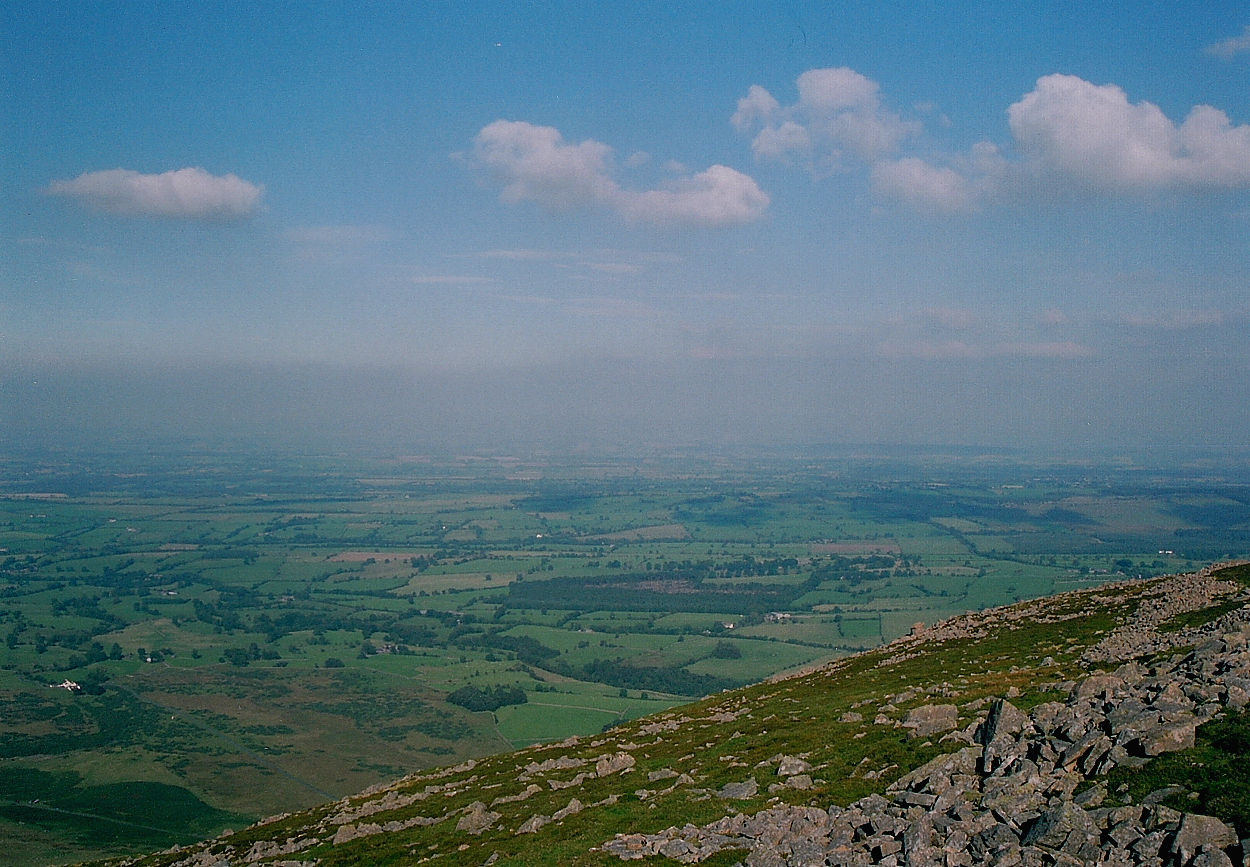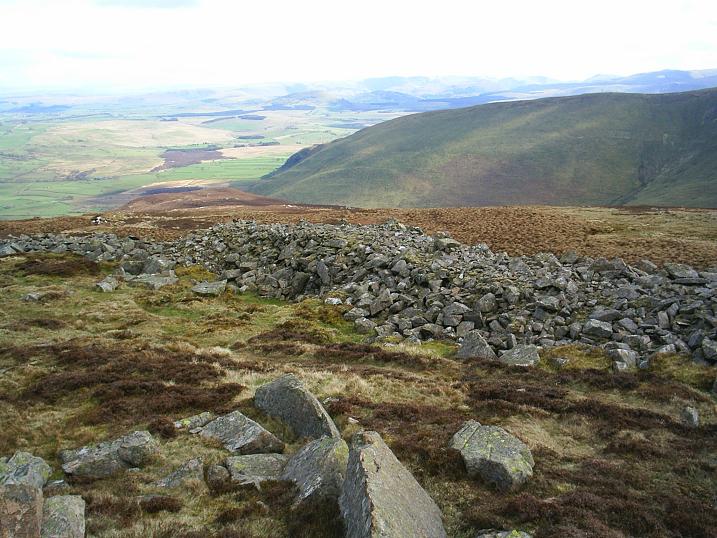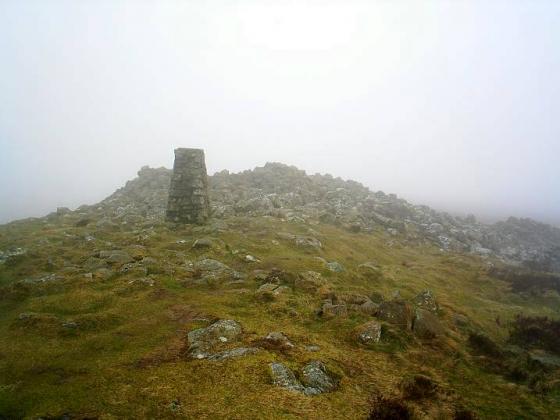



Arguably one of Britain’s finest ‘mountain-forts’...... one of the highest, too.

Carrock Fell in shadow, centre, seen from Jenkin Hill below Skiddaw.

Carrock Fell (in shadow, centre skyline) seen from Atkinson Pike (Blencathra).


Collingwood’s 1937 plan of Carrock Fell

18/02/07 Carrock Fell hillfort, west wall, looking south-west up the River Caldew to Skiddaw.

18/02/07 Carrock Fell hillfort, looking east along the north wall.

18/02/07 Carrock Fell hillfort, south wall, looking south.

27/05/06 Carrock Fell Iron Age hillfort, viewed from just outside
The Cockpit stone circle on Moor Divock, looking NW.

14/04/06. Carrock Fell Iron Age hillfort, viewed from Knott, looking easterly.

10/02/06. Carrock Fell hillfort from Bowscale Fell, looking N, 1.6 miles away as the raven flies.

Carrock Fell hillfort from Great Dodd. View looking N.

This is a view of the south wall of Carrock Fell hillfort, looking SW. The wall is quite substantial at this point, being 4 to 5 feet high, and a good 20 feet thick. Gateways are at he N, S, E and W. This part of the wall appears to be in its original form, except for a reduction in height. There appears to be signs of a ditch on both sides, much silted in, which is understandable due to the harsh weather. Perhaps some of the stones were excavated from this ditch, but most could have been taken from the summit rocks.

This is a view of the south wall of Carrock Fell hillfort, looking S. The wall is quite substantial at this point, being 4 to 5 feet high, and a good 20 feet thick. Gateways are at he N, S, E and W. This part of the wall appears to be in its original form, except for a reduction in height. There appears to be signs of a ditch on both sides, much silted in, which is understandable due to the harsh weather. Perhaps some of the stones were excavated from this ditch, but most could have been taken from the summit rocks.

Over 2,174 feet above sea level, this hillfort was built on the summit of Carrock Fell, where an oasis of rock rises above the desert of grass. This must have been a much different landscape when the hillfort was first built, with woodland growing to a much higher altitude than today. I haven’t been able to find the date of construction, but it is assumed to be “ancient British”. The views are outstanding, and anyone approaching the occupants would have been spotted a long way off.
Belated fieldnotes.
I arrived at Carrock Fell after a long day on the hills. It had been a bitterly cold day of gale-force winds and sub-zero temperatures on the fell tops.
The final approach, from the E, was over ground that would be boggy in warmer conditions, with the top rising above all else. This was the only direction which didn’t involve a steep ascent to gain the fort.
Once there I found the summit rocks to be surrounded by tumble-down stone walls, which were obviously impressive in their time. Entrances exist to the four points of the compass, and the views are extensive in all directions. There is no way this place could have been approached by stealth. The ascent from the valley is strenuous.
Archaeologists are of the opinion that it was never occupied as a fortified enclosure. If that was the case, then why all the effort to construct these very substantial banks of stone?
This is a very beautiful place of great loneliness, with nothing to be heard, save for the wind soughing through the pale grasses and ancient walls, and the song of the lark.
In modern times, everything unaccountable, however harmless it might be in itself, was ascribed to the agency of the devil. By the hope of a trifling reward – too often the soul of his employer – he might be induced to undertake the execution of any kind of structure. The Pikes on Carrock Fell are specimens of his diabolical architecture, though for what they were intended, tradition does not inform us; and the stones scattered about the summit of the hill, are the result of an accident that happened to him whilst engaged in their erection. He had finished one, and was bringing in his apron a sufficient quantity of stones to complete the second, when the apron-strings burst, and the greater part of his materials scattered in all directions. And this, it appears, is the reason why one of the Pikes is so much smaller than the other. The heap of stones in Ullswater is ascribed to a similar accident. On this occasion also he had his apron laden, and was striding in great haste from the Nab to Barton Fell, when the stones fell into the lake, and formed a bank dangerous to boats at some seasons.
From ‘Cumberland and Westmorland, ancient and modern’ by Jeremiah Sullivan (1857).
archive.org/stream/cu31924104090778#page/n139
” So spectacular and remote is the monument that its construction was ascribed to either the Devil or Michael Scot, the great Medieval scholar who was reputed to command demons.”
Geoff Holder The Guide to the Mysterious Lake District (2009)
The Eternal, judging from his photos, had better luck with the weather than Charles Dickens’ protagonists in his ‘Lazy Tour of Two Idle Apprentices’:
Is this the top? No, nothing like the top. It is an aggravating peculiarity of all mountains, that, although they have only one top when they are seen (as they ought always to be seen) from below, they turn out to have a perfect eruption of false tops whenever the traveller is sufficiently ill-advised to go out of his way for the purposes of ascending them. Carrock is but a trumpery little mountain of fifteen hundred feet, and it presumes to have false tops, and even precipices, as if it were Mont Blanc...
..Up and up, and then down a little, and then up and then along a strip of level ground, and then up again. The wind, a wind unknown in the happy valley, blows keen and strong; the rain-mist gets inpenetrable; a dreary little cairn of stones appears. The landlord adds one to the heap, first walking all round the cairn as if he were about to perform an incantation, then dropping the stone on to the top of the heap with the gesture of a magician adding an ingredient to a cauldron in full bubble.
Goodchild sits down by the cairn as if it was his study table at home; Idle, drenched and panting, stands up with his back to the wind, ascertains distinctly that this is the top at last, looks round with all the little curiosity that is left in him, and gets, in return, a magnificent view of -- Nothing!
The story can be read at Google Books, in Dickens’ second volume of Christmas Stories:
books.google.co.uk/books?id=wHnvCkvRgYIC&pg=PA361
“The largest known hillfort in Cumbria, was formed by a stone wall enclosing the highest part of the ridge”.






























